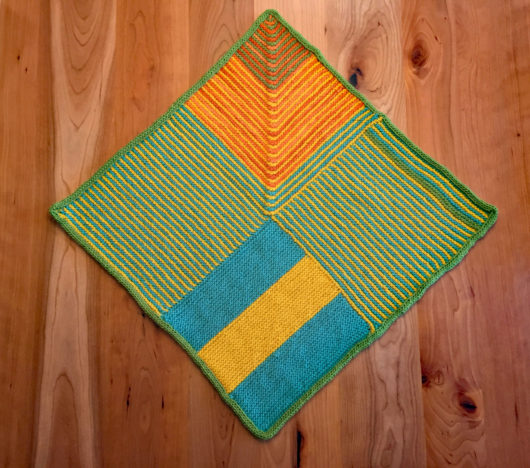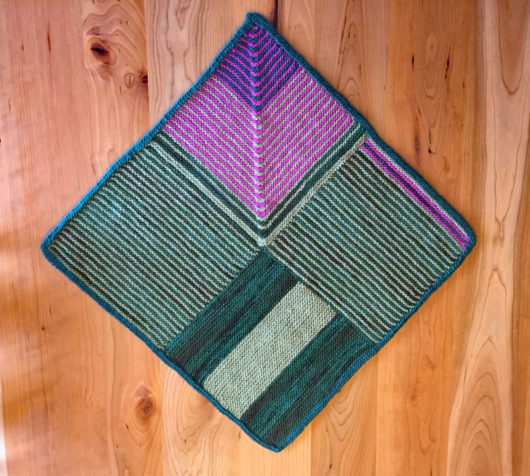This fingering weight stuffie is Sara Elizabeth Kellner’s freebie, Tiny Window Cat. What a cutie! Many yarnie types will know how tall the Clover “catcha-catcha” counter is. Two and 3/4 inches. 7 centimeters. Tiny cat ends up about half an inch taller.
I felt like my cat was looking as if she needed her own cozy cat basket.
To knit the sides of Tiny’s basket, I cast on 32 stitches, in the round. I knit 9 rounds, purled 1 round, knit 9 rounds, and bound off. Then I folded the basket on the purl round and sewed the cast on and bound off edges together, wrong sides facing each other. Echoing the construction of the bottom of the cat, I picked up 32 stitches along the bottom edge. I worked rounds 1 through 5 of Kellner’s pattern for the bottom of the cat, except on rows 1, 3 and 5, I worked the decreases 8 times around to form the bottom of the basket.
Tiny cat ended up in my granddaughter’s knitted “lovies” stash. Even her older brother thinks this guy is cute.
Keeping to today’s cat theme, I have two new cat basket blankets to show off. You’ve seen me working these before, here. I always knit them in Brown Sheep’s Lamb’s Pride Worsted.
I have a theory that that dab of mohair in the yarn turns out to be a real cat whisperer.
These two are my newest.
They’ve already been gifted to two good cats, in one good home, who needed a few more cozy landing spots.
This is an adaptation of a freebie pattern from Donna Druchunas. Hers is designed for super bulky yarn. My version uses worsted weight. Mine increases the stitches in each section, adds that mitered square with decreases on the diagonal that avoids any sewing after the last square is finished, and includes a knitted-on edge. You will find the details on how I knit these cat blankets here.

















